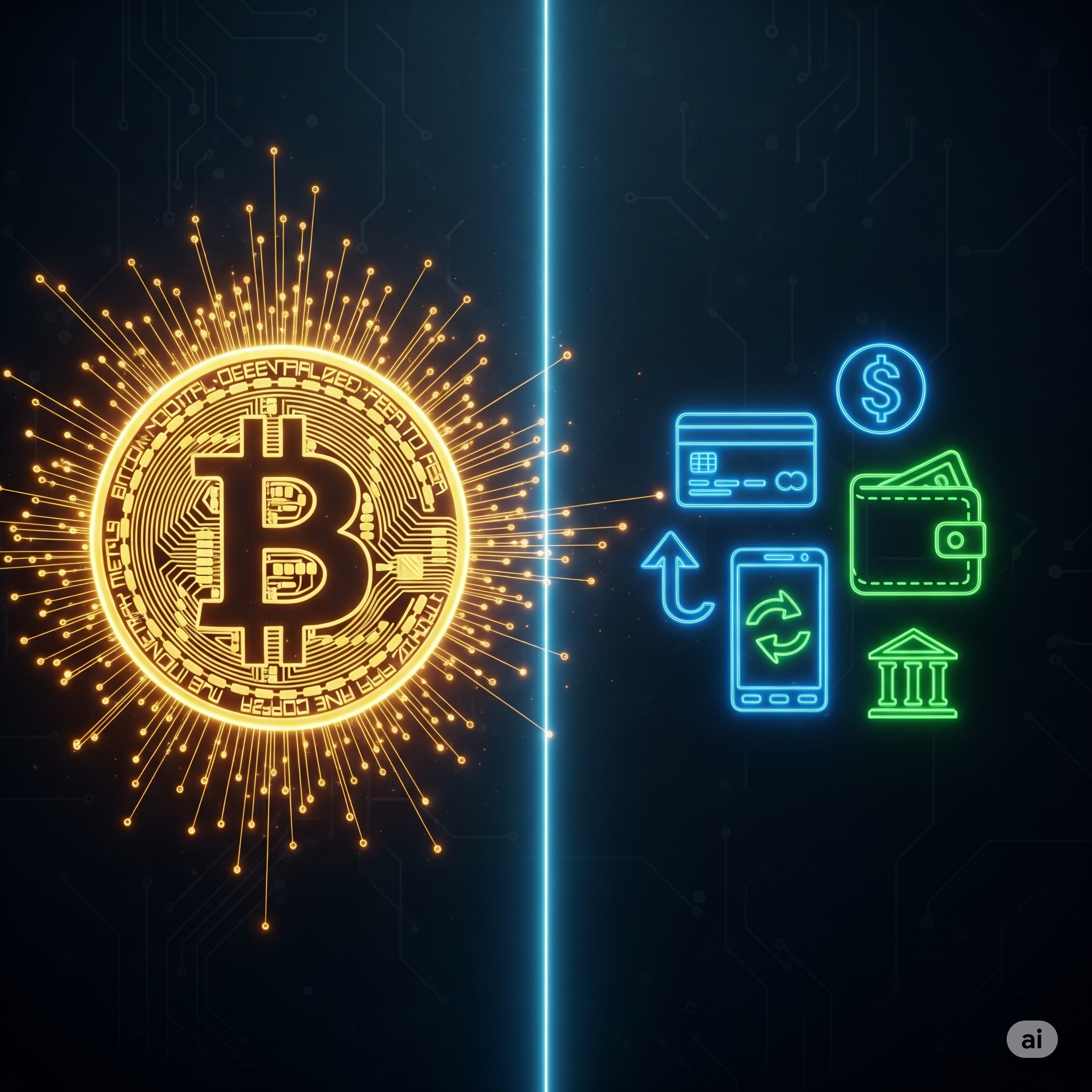Introduction
The financial landscape of the world is undergoing a major transformation. For centuries, money has been associated with physical forms such as coins, paper currency, and later digital representations managed by banks and governments. However, the emergence of Bitcoin in 2009 introduced a revolutionary idea—decentralized digital currency that operates without intermediaries. Over the years, Bitcoin has evolved from a niche innovation into a disruptive force reshaping how we perceive and conduct digital payments.
This article explores how Bitcoin is changing the concept of digital payments, its advantages, challenges, and the implications it has for the future of global finance.
Evolution of Digital Payments Before Bitcoin
Before the rise of cryptocurrencies, digital payments were primarily facilitated by:
- Bank Transfers – Transactions routed through banks and regulated financial institutions.
- Credit/Debit Cards – Payment networks like Visa, Mastercard, and American Express dominated digital commerce.
- Online Wallets – Platforms such as PayPal, Google Pay, and Apple Pay made online transactions faster and more accessible.
- Mobile Banking – Digital banking apps enabled instant fund transfers.
While these systems modernized financial transactions, they remained centralized and depended heavily on intermediaries like banks, governments, and financial regulators. This model created issues such as:
- High transaction fees, especially in cross-border transfers.
- Long processing times.
- Limited access for the unbanked population.
- Vulnerability to fraud and censorship.
Bitcoin entered this landscape as a peer-to-peer digital payment system, offering an alternative way of transferring value globally.
The Emergence of Bitcoin as a Payment System
Bitcoin, introduced by the pseudonymous creator Satoshi Nakamoto, was designed to allow two parties to transact directly without relying on banks or intermediaries. At its core, Bitcoin relies on blockchain technology, a decentralized ledger where all transactions are recorded transparently and securely.
Some key aspects that make Bitcoin different from traditional payment systems are:
- Decentralization: No single authority controls Bitcoin.
- Limited Supply: Unlike fiat money, which central banks can print, Bitcoin has a cap of 21 million coins.
- Peer-to-Peer Transactions: Payments can be made directly from one person to another.
- Global Accessibility: Anyone with internet access can send and receive Bitcoin.
The first real-world Bitcoin payment occurred in 2010, when a programmer purchased two pizzas for 10,000 BTC. Since then, Bitcoin has expanded its role from being a speculative asset to being accepted by major companies like Microsoft, PayPal, and Tesla (for a time) as a valid payment method.
How Bitcoin is Redefining Digital Payments
1. Decentralized Transactions
Traditional payments require authorization from banks or intermediaries. Bitcoin eliminates this need, allowing direct and instant transfers. This shift challenges the monopoly of banks over digital money movement.
2. Global Cross-Border Payments
International money transfers through banks or services like Western Union can take days and involve high fees. With Bitcoin, cross-border transfers can be completed within minutes at a fraction of the cost, making it highly beneficial for migrant workers and global businesses.
3. Financial Inclusion for the Unbanked
Around 1.7 billion people worldwide remain unbanked due to lack of infrastructure or documentation. Bitcoin only requires an internet connection and a digital wallet, providing financial access to marginalized populations.
4. Transparency and Security
All Bitcoin transactions are recorded on the blockchain, which is immutable and transparent. This reduces the chances of fraud and ensures accountability in payments.
5. Low Transaction Costs
Compared to credit card fees (which range between 2–4%), Bitcoin often provides lower costs, especially for large international transfers.
6. Censorship Resistance
Governments or banks can freeze bank accounts or restrict transactions. Bitcoin’s decentralized nature makes it resistant to censorship, allowing users to transact freely.
7. Programmable Money
With the integration of smart contracts on Bitcoin’s Lightning Network and second-layer solutions, payments can be automated and conditional, opening new possibilities in business agreements and e-commerce.
Case Studies: Bitcoin in Payments
- El Salvador
In 2021, El Salvador became the first country to adopt Bitcoin as legal tender. Citizens can pay for goods, services, and even taxes using Bitcoin. This experiment has shown both the potential and challenges of Bitcoin adoption at a national level. - Remittances
Countries like the Philippines, Mexico, and India receive billions of dollars in remittances annually. Bitcoin provides a faster and cheaper alternative for international money transfers, bypassing traditional remittance companies. - Retail Adoption
Major companies such as Overstock, Shopify, and PayPal now accept Bitcoin, signaling its growing integration into mainstream commerce.
Challenges in Bitcoin Payments
Despite its advantages, Bitcoin faces several hurdles that slow down its adoption as a mainstream payment system:
- Price Volatility: Bitcoin’s value fluctuates drastically, making it less reliable as a stable medium of exchange.
- Scalability Issues: The Bitcoin network can process about 7 transactions per second, compared to Visa’s 65,000. Solutions like the Lightning Network aim to address this issue.
- Regulatory Concerns: Governments are cautious about Bitcoin due to its potential for money laundering, tax evasion, and illegal activities.
- Energy Consumption: Bitcoin mining consumes significant energy, raising environmental concerns.
- Lack of Awareness: Many people still do not understand how Bitcoin works, which slows down its adoption.
Future of Bitcoin in Digital Payments
Bitcoin’s role in digital payments is likely to expand as technological advancements and adoption continue. Some potential developments include:
- Lightning Network Adoption – This second-layer solution allows instant, low-cost Bitcoin transactions, making micropayments feasible.
- Stable Bitcoin Ecosystem – As financial instruments like Bitcoin ETFs emerge, Bitcoin may stabilize, reducing volatility concerns.
- Wider Retail Acceptance – More global retailers and online platforms are expected to adopt Bitcoin payments.
- Integration with Central Bank Digital Currencies (CBDCs) – While CBDCs will be government-controlled, Bitcoin may coexist and complement them in the digital economy.
- Increasing Institutional Involvement – Financial institutions may create hybrid models combining traditional finance with Bitcoin payments.

Conclusion
Bitcoin is more than just an investment asset; it represents a paradigm shift in how we think about money and payments. By enabling decentralized, transparent, and borderless transactions, Bitcoin challenges the existing financial system and offers new opportunities for global financial inclusion.
While challenges such as volatility, scalability, and regulations remain, ongoing innovations like the Lightning Network and broader adoption indicate that Bitcoin will continue to play a vital role in the evolution of digital payments.
In essence, Bitcoin is not just changing the way payments are made—it is redefining the very concept of money in the digital age.




